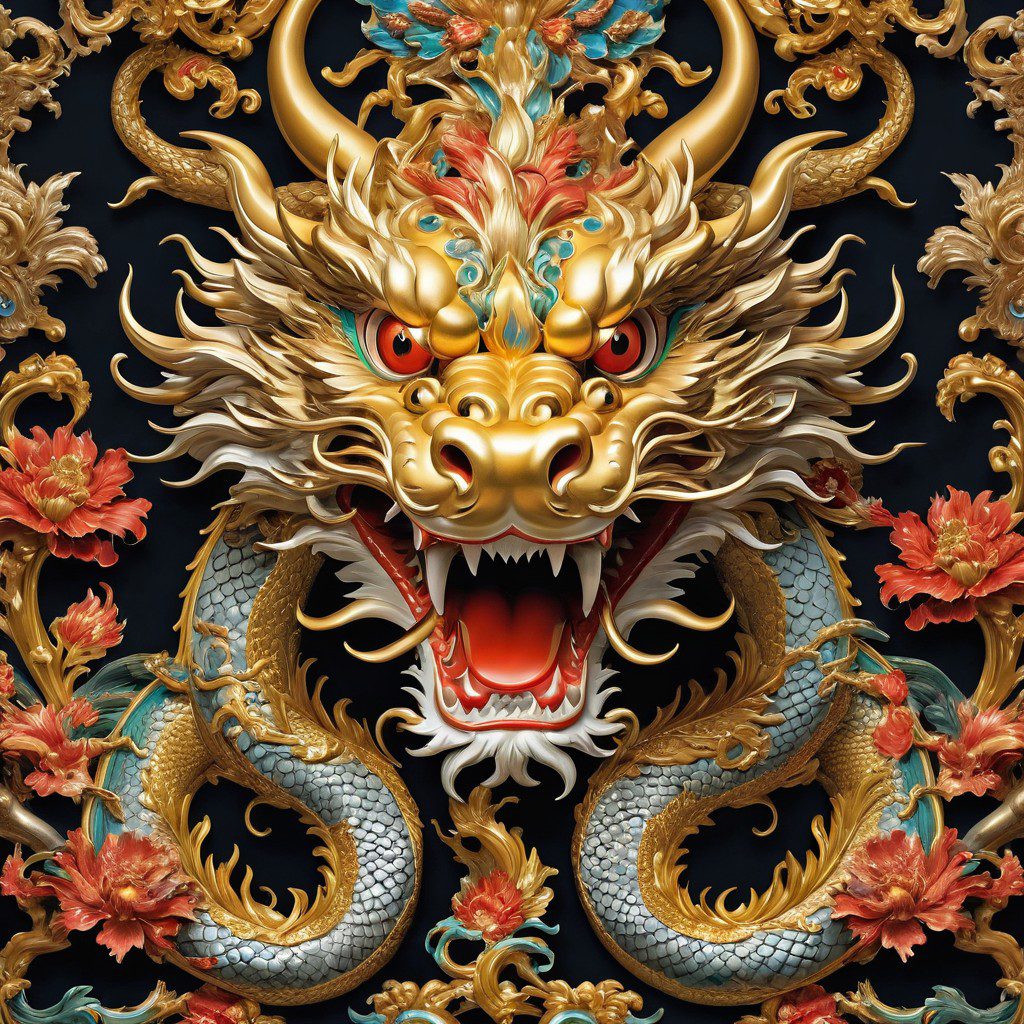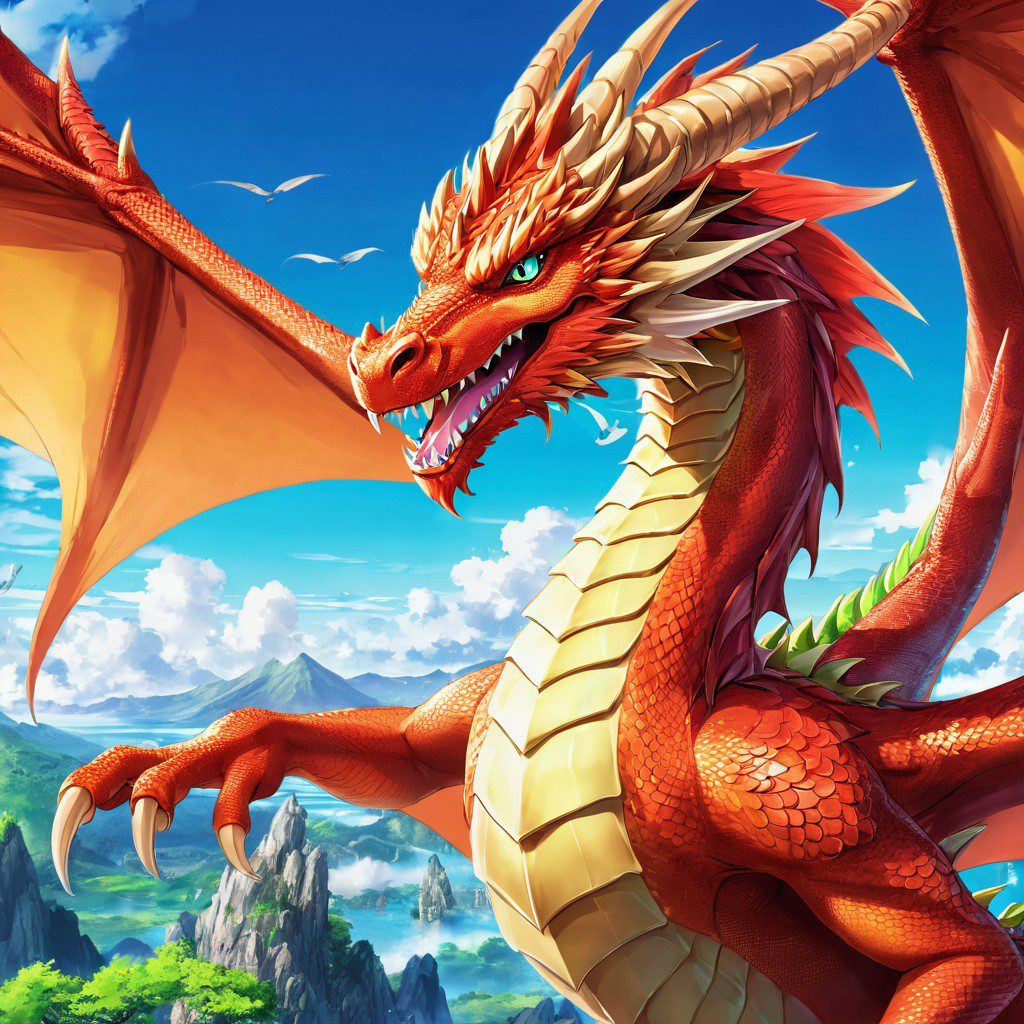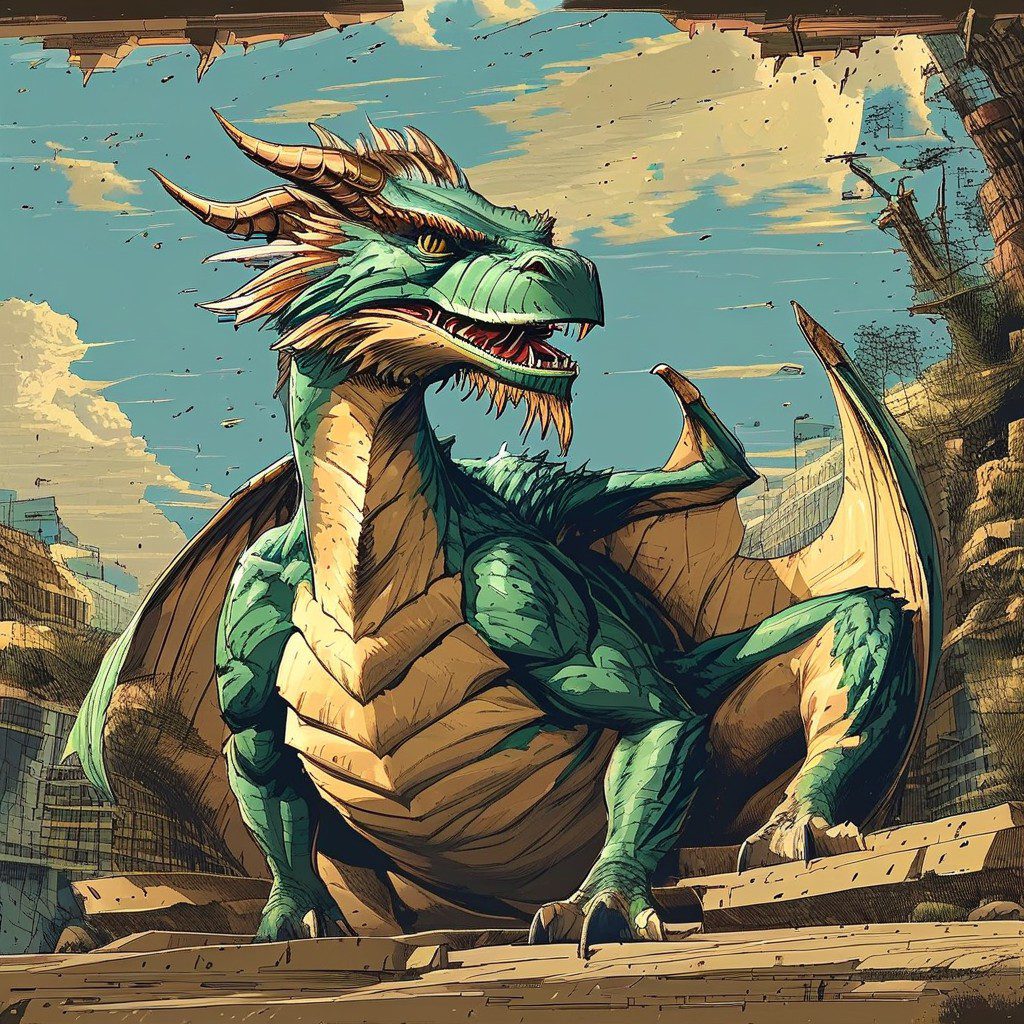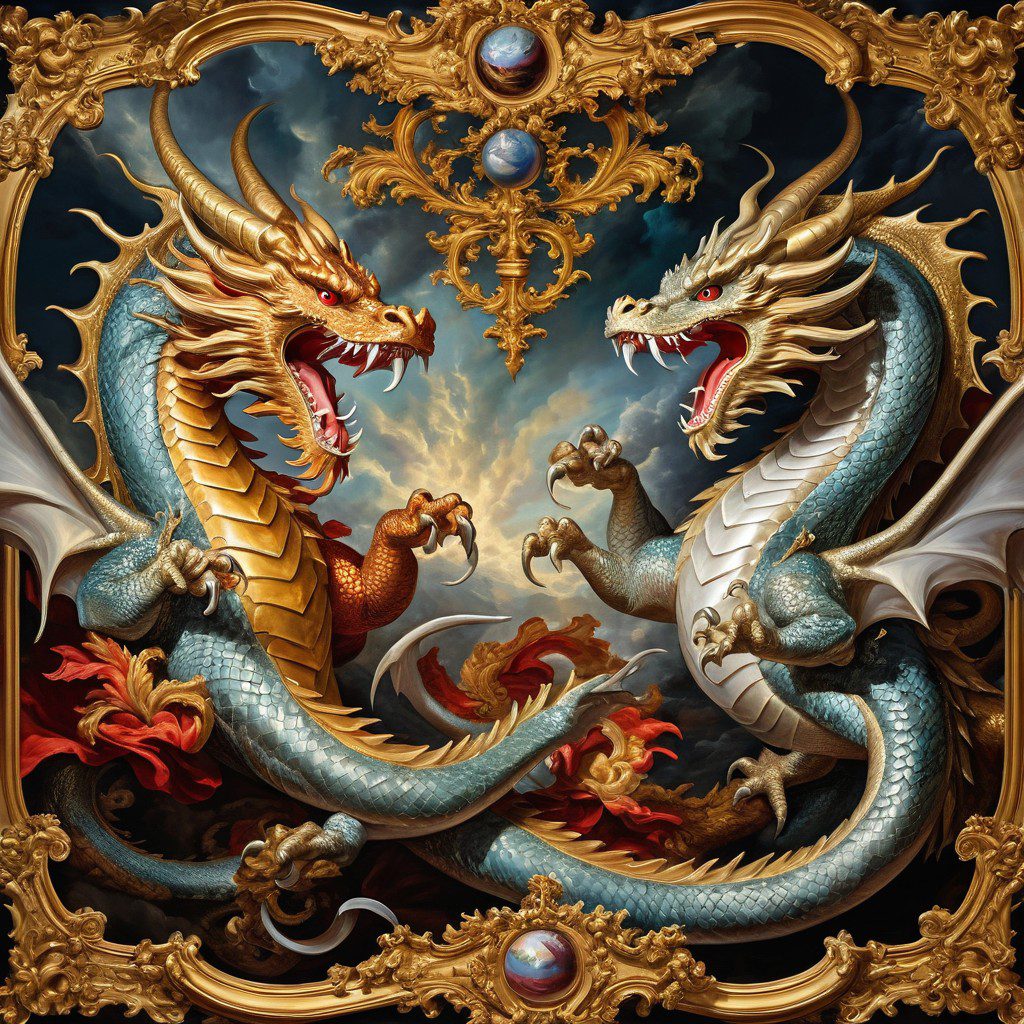The History and Mythology of Dragons: Fire, Flight, and Fear

Few creatures in myth are as awe-inspiring and universally captivating as the dragon. These legendary beasts, often depicted as giant, fire-breathing serpents or reptiles, have appeared in the folklore of nearly every culture around the world. From the wise and benevolent dragons of the East to the terrifying monsters of the West, dragons have long symbolized power, chaos, wisdom, and danger.
But how did dragons become such an integral part of human mythology? What do they represent across different cultures, and how have they evolved in modern media? Let’s dive into the mythological history of these iconic creatures and explore their impact on our stories, beliefs, and imagination.
Origins: The Birth of Dragons in Ancient Mythology
Dragons have ancient roots, with the earliest dragon myths appearing in the Near East and Mesopotamian cultures as early as 3000 BCE. One of the first recorded dragon-like figures is Tiamat, the primordial chaos goddess from Babylonian mythology, often depicted as a massive sea serpent or dragon. Tiamat embodied the untamed, destructive forces of the world and was defeated by the storm god Marduk, marking one of the earliest mythological battles between gods and dragons—a theme that would persist for millennia.
In ancient Egypt, the serpent Apep (also known as Apophis) was a monstrous force of evil who threatened the sun god Ra. Every night, Apep attempted to devour Ra as he sailed across the sky, plunging the world into darkness. Ra’s victory over Apep became a symbol of the eternal battle between light and darkness, order and chaos—a recurring theme in dragon myths across different cultures.
The Greeks, too, had their share of dragon myths, most notably the Ladon, a many-headed serpent who guarded the Golden Apples in the Garden of the Hesperides, and Python, a dragon slain by Apollo. In these myths, dragons were often depicted as obstacles for heroes, guardians of sacred treasures, or embodiments of chaos that needed to be subdued to bring order to the world.
Dragons of the East: Benevolence and Power
In Eastern mythology, dragons take on a different role, often seen as wise, powerful, and benevolent creatures rather than malevolent forces of destruction. In Chinese mythology, the dragon (Lóng) is one of the most revered symbols, associated with the elements of water, rain, and agriculture. Chinese dragons are traditionally depicted as serpentine creatures with long bodies, no wings, and the ability to control the weather. Unlike their Western counterparts, Chinese dragons are protectors, often bringing good fortune, prosperity, and blessings to those who revere them.
The Dragon Kings of Chinese folklore, for example, were believed to rule the four seas, controlling the rains and floods. These dragon deities were seen as intermediaries between heaven and earth, respected for their power over nature and ability to bring balance to the world. The Chinese emperor was often referred to as the “Son of the Dragon,” symbolizing his divine right to rule.
In Japanese mythology, dragons (Ryū) share many similarities with their Chinese cousins, often appearing as water deities associated with rivers, seas, and rainfall. However, Japanese dragons tend to be more solitary and are frequently linked with mountaintops and storms, blending the symbolism of earth and sky. The Ryūjin, or Dragon God, is a central figure in many Japanese legends, especially in tales of the sea and fishermen.
Across the East, dragons represent strength, wisdom, and harmony, often standing as guardians of natural order, and their symbolism in art, architecture, and mythology reflects these positive attributes.
Dragons of the West: Terror and Triumph


In stark contrast to the benevolent dragons of the East, Western dragons are almost always depicted as destructive, terrifying monsters. These dragons embody chaos, greed, and death, and the heroes of Western mythology are often tasked with slaying them to restore peace and order.
One of the most famous early depictions of a dragon in Western mythology is found in the Norse sagas. The great dragon Fafnir, once a dwarf, was transformed into a monstrous serpent after being consumed by greed. Fafnir hoarded a treasure of gold, and his slaying by the hero Sigurd (or Siegfried, in the Germanic Nibelungenlied) became one of the most iconic dragon-slaying tales in European myth.
Dragons also appear prominently in Celtic and Arthurian legends. The Red Dragon of Wales, for instance, symbolizes the struggle of the Welsh people for independence and has become a national emblem. In the Arthurian cycle, the wizard Merlin has a vision of a battle between a red and a white dragon, symbolizing the conflict between the native Britons and the invading Saxons. The red dragon ultimately prevails, a prophecy of victory for King Arthur and his people.
In medieval Europe, dragons became central figures in Christian iconography. The Book of Revelation describes a fearsome dragon as the embodiment of Satan, reinforcing the idea of dragons as agents of chaos and evil. This view of dragons influenced countless legends, with one of the most enduring being the story of Saint George and the Dragon. In this tale, George, a Christian knight, defeats a dragon terrorizing a town, saving the princess and converting the people to Christianity. This motif of the heroic dragon-slayer became a recurring theme in European folklore, symbolizing the triumph of good over evil, civilization over barbarism.
The Evolution of Dragons in Modern Fantasy
The modern concept of dragons owes much to both the Western and Eastern traditions but has been transformed and expanded through the lens of fantasy literature, films, and games. While the destructive, fire-breathing dragon remains a staple of Western fantasy, modern storytellers have also embraced the Eastern view of dragons as wise, mystical beings.
J.R.R. Tolkien’s work in particular helped shape the modern image of dragons. His 1937 novel, The Hobbit, introduced Smaug, a greedy, cunning, and immensely powerful dragon who hoards gold in the Lonely Mountain. Smaug is the quintessential Western dragon—greedy, destructive, and emblematic of mankind’s darker instincts. Tolkien’s portrayal of dragons as ancient and intelligent beings capable of speech and manipulation became a key influence on later fantasy writers.
In the Dungeons & Dragons role-playing game, dragons are divided into two distinct categories: chromatic dragons, which are evil and aligned with greed and destruction, and metallic dragons, which are wise and benevolent, embodying a balance of the Eastern and Western traditions. This dual portrayal of dragons as both good and evil is reflective of the creature’s complex and multifaceted nature across different mythologies.
In George R.R. Martin’s “A Song of Ice and Fire” series (and its television adaptation, Game of Thrones), dragons are seen as symbols of raw power and destruction but also as symbols of rebirth. The Targaryen dynasty, the rulers of Westeros, control dragons and derive their power from these awe-inspiring beasts, whose return to the world signals both the possibility of great devastation and a new era of conquest.
Dragons have also become a prominent feature in video games, appearing as both fearsome enemies and noble allies in series like The Elder Scrolls, World of Warcraft, and Final Fantasy. In these games, dragons often symbolize ultimate power and challenge, with players either fighting or befriending them depending on the story.


Strengths and Weaknesses of Dragons
Dragons, whether seen as villains or protectors, possess a wide array of powers that make them formidable creatures. However, they are not without their vulnerabilities.
Strengths
- Flight: Dragons are often depicted with vast wingspans, allowing them to soar through the sky and attack from above.
- Fire-Breathing: In most Western traditions, dragons breathe fire, capable of incinerating enemies and entire villages in moments.
- Immense Strength: Whether in Eastern or Western depictions, dragons are typically portrayed as physically powerful creatures capable of destroying buildings and overwhelming human warriors.
- Ancient Wisdom: In many myths, dragons are not just beasts but highly intelligent, often possessing knowledge of ancient magic or secret lore.
- Magic: Some dragons possess magical abilities, particularly in Eastern traditions, where they can control the weather or transform into other creatures.
Weaknesses
- Pride and Greed: Dragons are often undone by their own arrogance or greed. In many myths, their obsession with treasure or power leads them into traps or conflicts they could have otherwise avoided.
- Vulnerable to Heroes: Despite their immense power, dragons are frequently defeated by brave heroes, often through cunning or divine intervention rather than brute strength.
- Magical Weakness: In some stories, dragons can be vulnerable to specific spells or weapons, such as Saint George’s lance or magical swords designed to slay them.
The Symbolism of Dragons: What Do They Represent?
Dragons, with their blend of ferocity and wisdom, symbolize many things across different cultures. In the West, dragons often represent the untamable forces of nature, chaos, and the unknown. They are obstacles to be overcome, reflecting humanity’s desire to impose order on the world and conquer its fears.
In contrast, in the East, dragons are seen as protectors of nature, symbols of divine power, balance, and harmony. They represent the potential for transformation and enlightenment, guiding humanity rather than opposing it.
Modern portrayals
of dragons often emphasize their role as forces of change—they are catalysts in stories, bringing about destruction but also the possibility of renewal and growth. Whether they are enemies or allies, dragons continue to inspire awe and wonder, representing both the best and worst of human nature.
Dragons Today: A Myth That Endures
From the ancient deserts of Mesopotamia to the bustling streets of modern cities, dragons remain one of the most powerful symbols in human mythology. Their ability to adapt to the changing needs of storytelling, from terrifying monsters to wise guardians, ensures that they will continue to captivate our imaginations for generations to come.
Whether you see them as ancient enemies or noble protectors, dragons will always be creatures of mystery and magic—beasts whose stories remind us of the immense power that lies within the myths we create.
What’s your favorite dragon story? Are you more drawn to the fierce Western dragons or the wise Eastern ones? Let’s talk about it in the comments below!
